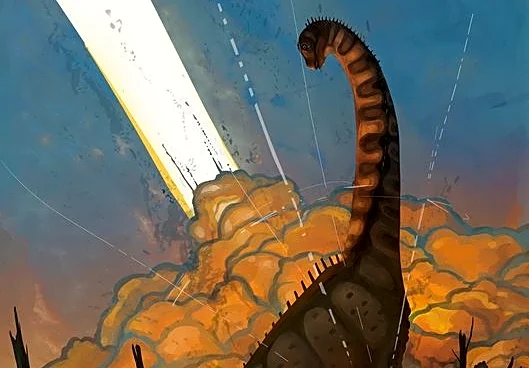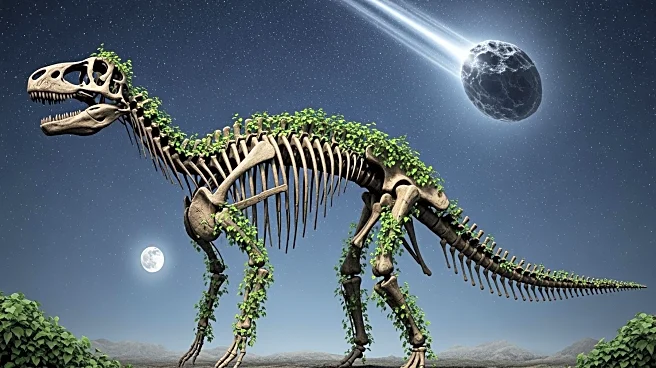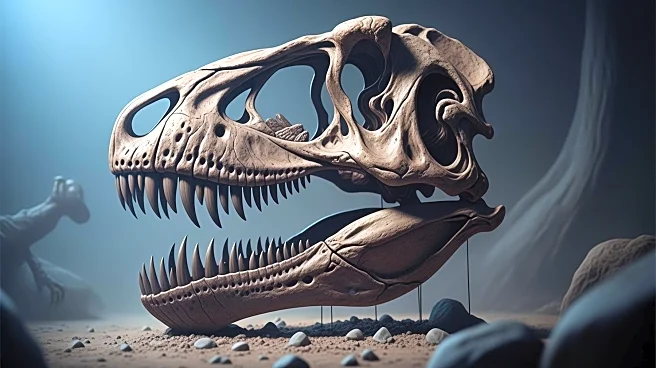What's Happening?
Recent research has uncovered evidence suggesting that dinosaurs were thriving in North America just before the catastrophic asteroid impact 66 million years ago. The study, published in the journal Science,
analyzed fossils and surrounding rocks from the Kirtland Formation in northern New Mexico. These fossils, including those of Tyrannosaurus rex and a Triceratops-like herbivore, date back approximately 400,000 years before the asteroid strike. The age determination was made by examining volcanic glass particles and magnetic minerals in the rock formation. The findings challenge the notion that dinosaurs were in decline before the asteroid event, as differences in species found in New Mexico and Montana indicate diverse and distinct dinosaur communities. The study highlights the presence of Alamosaurus, one of the largest dinosaurs, which suggests that sauropods were still thriving at the time of the asteroid impact.
Why It's Important?
This discovery is significant as it provides new insights into the state of dinosaur populations just before their extinction. The evidence contradicts previous theories that dinosaurs were already in decline, suggesting instead that they were diverse and flourishing. This has implications for understanding the dynamics of prehistoric ecosystems and the impact of sudden catastrophic events on biodiversity. The study also underscores the challenges in accurately dating dinosaur fossils, as traditional methods like carbon dating are not applicable. The findings could influence future paleontological research and theories about the end-Cretaceous extinction event, potentially reshaping our understanding of how life on Earth responded to massive environmental changes.
What's Next?
Further research is needed to determine whether the findings from New Mexico are representative of broader trends across North America and globally. Scientists may conduct additional studies at other fossil sites to build a more comprehensive picture of dinosaur diversity and distribution before the asteroid impact. This could involve more detailed analysis of rock formations and fossil records in different regions. The study's authors and other paleontologists may also explore the implications of these findings for understanding the resilience and adaptability of dinosaur species in the face of environmental changes.
Beyond the Headlines
The study raises questions about the resilience of ecosystems and the factors that contribute to the survival or extinction of species. It highlights the importance of understanding past extinction events to inform current conservation efforts and strategies for mitigating the impacts of climate change and other environmental threats. The research also emphasizes the need for interdisciplinary approaches, combining geology and paleontology, to unravel the complex history of life on Earth.














